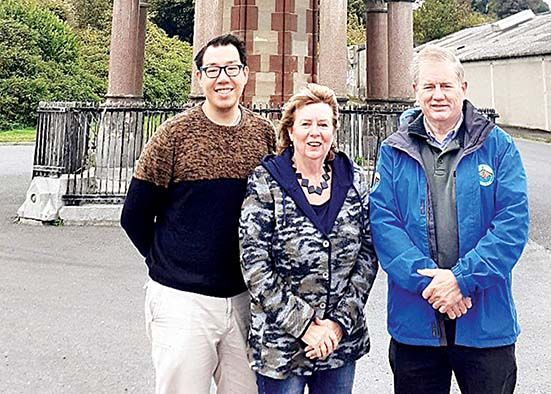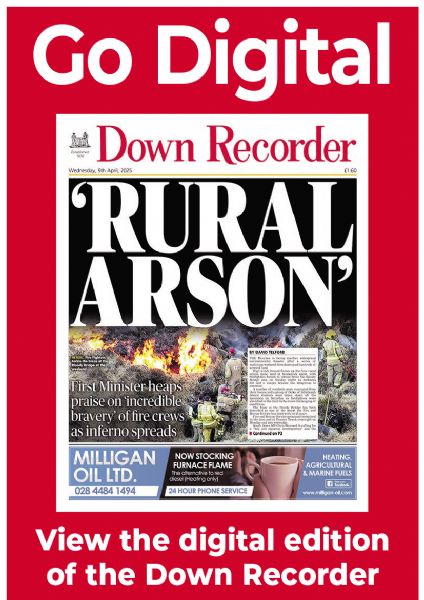Columban Way walk receives funding
Columban Way walk receives funding
12 October 2022

AMBITIOUS plans to include part of Down District in an exciting new Christian heritage walking trail has received a €250,000 boost from the Irish government.
The Columban Way is a cultural route that crosses Europe and celebrates the heritage of the ‘Irish monastic movement’ in which Columbanus and Gall played an important part.
Plans for an epic 266-mile trail across Ireland would pass through Newcastle, Dundrum, Downpatrick, Killyleagh, Killinchy and Comber, with Newry, Mourne and Down Council one of nine local authorities involved in the project.
The route is being described as a platform for cultural and scientific exchange, a tourism and economic development initiative and an ambitious plan to create a pilgrimage route that crosses western Europe.
Once completed, the Columban Way will become the second longest pilgrimage route in Europe, after the Camino de Santiago which it joins with, along with other major walking trails in Europe including the Francigena, which crosses Italy and France and Scandinavia’s Saint Olav Ways.
The walking route is being traced out by local authorities and volunteer groups throughout Europe, each identifying secure and attractive trails, off-road as much as possible, as well as the accommodation and other services needed for travellers.
This information is being centralised on a single ‘Geotrek’ mapping platform that will allow walkers and other travellers to follow the route, using their computer or smart phone, and also allow local communities to provide information and services, all at no charge.
The Columban Way is becoming the biggest walking route mapping project ever developed in Europe and Ards and North Down councillor, Deborah Girvan, chairwoman of Friends of Columbanus Bangor who has been championing the European pilgrim route for over five years, is delighted with the progress being made and the welcome financial support from the Irish government.
She explained that last May, Ards and North Down Council partnered with Carlow County Council to submit an application to develop an All-Ireland Columban Way feasibility study which was successful.
“Whilst the beginning of the Columban Way pilgrim route is up and running in Co Carlow and the end of the Columban Way has been developed from Comber to Bangor via Newtownards, this gives us the scope and credibility to start joining up the route in between the Ards and North Down and Newry, Mourne and Down Council areas,” she explained.
“This is good news for Newry, Mourne and Down as towns and villages in the area area will be included in the Shared Island Feasibility Study.”
Rowallane councillor, David Lee, said described the heritage walking trail as an “excellent project” which has the potential to boost the rural economy by attracting walkers not only from Northern Ireland, but pilgrims from the Republic of Ireland and Europe.
“It is anticipated that the route will link in with the St Patrick’s Way and follow the former Ulster Way along the Quoile River in Downpatrick and across the Quoile barrier to Killyleagh,” he continued. “From Killyleagh, the route will travel towards Balloo, Whiterock, the Nendrum monastic site and onwards to Comber.”
Downpatrick councillor Cadogan Enright, who has been working with Cllr Girvan for the past two years to develop the Columban Way, is also delighted with the progress being made.
“Both local councils have a rich monastic heritage, which is increasing in popularity due to the commendable work of the St Patrick Centre and Friends of Columbanus Bangor,” he said.
“However, some sections of the route need to be improved to keep walkers safe and we look forward to contributing to the Shared Island Feasibility Study and sharing our knowledge about our respective areas.”
Cllr Enright said the new Christian heritage walking trail has secured cross-party support from local MPs who helped “navigate the tricky blockages of land ownership along the route”.


